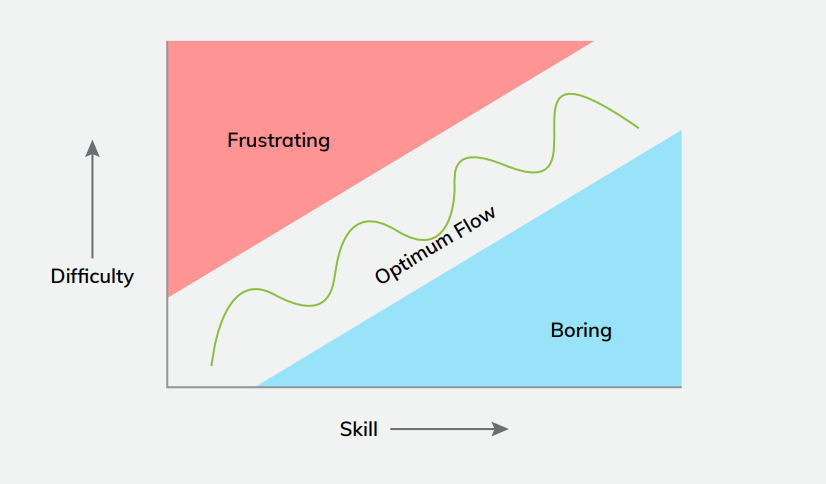Scenario Design: Go to Whoa
If scenarios are a powerful learning solution, how do you go about designing them? As with all learning design, you need appropriate initial information gathering, then aligned design, implementation in appropriate technologies, and evaluation to test and finalize the design. However, there are nuances to scenario design that should be observed.
Analysis
Initially, there should be performance objectives to achieve, that state what the outcome should be. If this hasn’t been done, it has to be part of the initial analysis. That is, you want to identify the problem in the organization and the root cause. If it’s not a training problem, scenarios won’t help. If it is, having a precise definition is crucial. You need to know what learners need to be able to do at the end because that’s what they’ll have to do in the scenario!
There are a few other things needed from the analysis as well that are crucial to scenarios. For one, you need to know what mental models guide performance. Here, it’s for the feedback that comes at the end of the scenario. You’ll also need to know what the full suite of contexts is in which these choices are made.
You also need to know the things learners or performers do wrong on the job. These will make the alternative choices in the scenario! You’ll also need to know the consequences of the right, and wrong, choices. Further, you’ll need to know what these choices lead to. If they’re linked, you’re looking at a branching scenario, at least for the final practice. These are presented as part of the scenario!
Finally, having good stories from your SMEs, about wins and losses, is useful for choosing settings for the scenario. You’ll likely want to document your findings and intentions and get a sign-off before proceeding.
Also, at this stage, specify what the criteria will be for acceptance. What level of user performance do you need (typically stipulated in your performance objectives, c.f. Mager’s formula for good objectives)? Further, what will be an acceptable level of engagement? If you want the best from learners, it’s desirable to make the scenarios engaging: that is, truly embody critical decisions, have compelling settings that learners recognize are important, and flow from beginning to end in a plausible storyline. How will you know this is true? Determine now what will be acceptance criteria.
Specification
Once you’ve got your criteria that the scenario has to address: the right choice, mistakes, consequences, and contexts, you’re ready to plan scenarios. Don’t worry about implementation details yet, focus on the flow.
In general, you want to start with your final practice, which is close to the real performance, and then figure out what additional scenarios you need. You want to think about the appropriate spread of contexts and the steady development of capabilities for the task to be learned. You’ll essentially want to have a map of what the full suite is.
From there, you go into the details of them. What is the starting scenario? Is it mini, linear, or branching? Don’t immediately assume your scenarios have to be real-world settings. If you’re looking for far transfer, that is to a wide variety of contexts, you may find that a fantastic setting (e.g., Wild West, medieval times, outer space, etc.) may facilitate transfer better than an exact replication of the real-world.

Thus, you need a setting for each scenario. Where will they have to make these decisions? What is the minimal set of contexts to provide application in all appropriate settings? Then, how can you make it more dramatic? Don’t just make a deal, save the company. Don’t just help a person, make it the ambassador’s daughter. Try to make the setting more dramatic than real life, because in real life it will really matter!
Don’t forget to ensure that the decision is pitched at the right level for the learner. If it’s early in the sequence, it’s likely simplistic, but as you develop their ability, you need more challenges, until you’re at the level that they’re ready to go perform. So you want to make sure the decisions get more discriminating as you go.
One of the likely elements in your scenarios are other characters. For each scenario, who are the players? What are their distinguishing characteristics? Avoid stereotypes; find plausible background details that explain why they’re how they are. In writing for films, text, or games, it’s generally recommended to put more detail into the character than appears in the experience.
All these elements are largely the same for example scenarios. They need contexts and decisions, but the choice is already made. What they need to do, besides tell a compelling story, is show another setting that assists learners in understanding how the model plays out in practice.
You’ll want to create storyboards for any scenarios that are more than just a mini. When you’ve stipulated what the experience should be, then you can worry about how it will be created.
Implementation
These days, most authoring tools not only support multiple choice questions but even branching scenarios. Some will even let you carry over ‘state’ (the consequences of a choice) to a later place in the decision tree, to allow more complexity.
Thus, you are likely to be able to use scenarios in ways that are already familiar. There are, however, tools (e.g., Twine) that make it easier to represent your structure, and thus minimize problems. However, if you’re doing branching scenarios at scale, you may want to look at the industrial-strength tools (c.f. BranchTrack). Note that these mentions are not recommendations, merely pointers.
Do some tuning, however. Make sure, for instance, that the dialog is natural. Too often, our written language is too formal to begin with, and for dialog, it’s even more important to be natural. Consider having someone review your work or have someone who’s skilled at dialog handle that part of the writing. Similarly, ensure your visual look and feel is not only consistent but also appropriate.
Evaluation
One thing that is mentioned above needs to be made clearer: iterate! That is, whatever you create at first, plan to test and refine. Humans aren’t as predictable as, say, concrete, and as such, anything you do is likely going to have somewhat complex and unpredictable reactions.
Thus, you should be testing to see if you’ve hit the acceptance criteria you stipulated in the analysis phase. Performance in the scenario should be an acceptable path to a successful conclusion. How about the experience, however? That too, is worthy of testing, and certainly will be a factor in whether the scenario is effective. As a capture of a situation, if learners don’t perceive it as plausible, their reactions won’t reflect how they’d perform in a real situation. Therefore, such scenarios aren’t good learning tools.
While you shouldn’t have usability problems, those should be eliminated first. Then, you evaluate the learning effectiveness. Finally, you test engagement. Fortunately, engagement is subjective, so your learners can simply tell you what they think (in ways that minimize their need to dissemble). You don’t need to measure adrenaline in the blood or galvanic skin response.
Really, this shouldn’t be much different from what you normally do for learning, but that focus on mistakes and consequences is doubly important here. Still, it likely will take some practice before creating scenarios becomes a well-established habit.
Scenario design is a potent learning tool. To create effective scenarios, you must first analyze performance objectives, specify acceptance criteria, plan engaging scenarios, implement them efficiently, and continually evaluate and refine them. Mistakes and consequences are crucial in guiding learners. For a deeper understanding of scenario-based learning, download our eBook, “Scenario-Based Learning: The Ultimate Asset in Your L&D Toolkit.” If you have specific questions or would like to discuss scenario-based learning in more detail, we invite you to reach out to us at eLearning@upsidelearning.com. We’re eager to engage with you and support your learning objectives.














